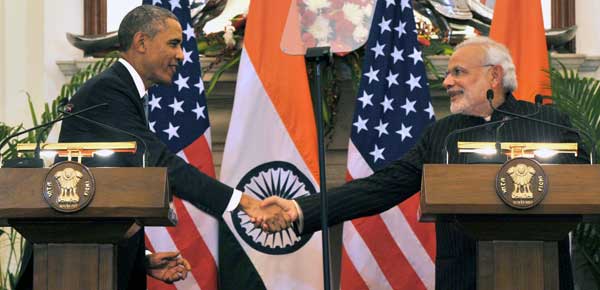IDR Blog
Indo-US relationship: friends with benefits or all-weather allies?
Former American diplomat and Secretary of State Henry Kissinger once famously said that America had no permanent friends or enemies, only permanent interests. Nothing reflects the authenticity of that brutally honest outlook of America’s foreign policy than Uncle Sam’s blossoming relationship with India.
As American power seems to wane, and with the rise of many other regional powers – most notably China – the US is increasingly feeling the need of new allies that can help it preserve its strategic interests.
The cooperation between the Indian and American governments at various levels in the past two decades has significantly mitigated the lack of trust that once plagued the relationship between the two countries.
The growing cooperation between the two countries is often hyped by over-enthusiastic analysts and journalists, that inflated sense of optimism is certainly not void of substance. On various occasions, the leaders representing both nations have labeled the relationship between India and the US as that between two “natural allies”.
However, not everyone agrees. Diplomatic experts are generally of the view that the improving relationship between India and the US can be attributed to two primary factors:
Changing geopolitical realities
Ever since the fall of the Soviet Union in 1991, the world had become by and large unipolar with the US playing the role of the Big Brother. With the emergence of China, that’s no longer case.
As American power seems to wane, and with the rise of many other regional powers – most notably China – the US is increasingly feeling the need of new allies that can help it preserve its strategic interests. Thus India enters the scene.
As home to functional democracies, India and the US simply have many common interests that cannot be overlooked. These overlapping interests include avoiding a hostile Chinese rise, maintaining viable open-sea lanes in order to combat terrorism and meet energy requirements.
Also, to ensure that China’s rise does not result in a power imbalance in the South East Asia and the Asia Pacific region, the US is constantly making efforts to encircle the Asian Dragon along with its allies.
Both the US and India are aware of each other’s growing discomforts with the rise of China. India knows that without the help of major global powers including the US, it cannot succeed in containing China in its neighborhood.
Countries like Japan, South Korea, Australia, and the Philippines are clearly in the US camp. Compared to those nations, India has been traditionally a lot more cautious when it comes to giving in to US demands. The US security commitments in Asia as well as India’s own close economic relationship with China prevent it from joining an anti-China coalition.
However, in recent years, the growing dominance of China in the region has also worried New Delhi as it still sees Beijing as a major threat – both economically and militarily. That has prompted the current government to take a more proactive step in its effort to contain China in the neighborhood – especially in the strategically important Indian Ocean.
Here comes the tricky part – both the US and India are aware of each other’s growing discomforts with the rise of China. India knows that without the help of major global powers including the US, it cannot succeed in containing China in its neighborhood.
To project itself as a credible counter to China in the region, New Delhi doesn’t mind switching from its old and obsolete non-aligned policy as long as it gains the external support from the US and allies.
The US is fully aware that India is probably the only country in the region that can offer some serious competition to China. Therefore, a stronger and more powerful India definitely acts in its favor as long as India continues supporting its efforts to contain China.
India’s booming economy
India’s emergence as the fastest-growing major economy has also managed to woo American businesses and the US government. India is on its way to become a major regional economic power (some would argue it already is) as the country’s industry and technology sector booms.
India is currently the largest arms importer in the world that procures weapons and other military hardware worth billions every year. That makes it a lucrative destination for American defense companies…
Even though a lot of Americans still see it as an impoverished state, the country boasts of a growing middle class with respectable spending power alongside a thriving free market economy. It’s one of the largest markets for American products.
In addition to the strategic benefits, a warm relationship with India allows the US much better business opportunities. When the rest of the world has still not been able to recover from a deteriorating global economy, India is doing a relatively good job increasing its economic growth rate.
Defence is another major area that has brought both countries closer. For decades, India typically filled its arsenal with Russian military hardware. That has changed in recent years after India started showing a keen interest in the US, Israeli and French products.
India is currently the largest arms importer in the world that procures weapons and other military hardware worth billions every year. That makes it a lucrative destination for American defense companies like Boeing and Lockheed-Martin. Last month, Prime Minister Narendra Modi cleared a $3.1 billion deal to buy Apache and Chinook military helicopters from Boeing.
Keeping these aspects in mind, it is obvious that the relationship between India and the US is dependent on mutual interests. Hence, “friends-with-benefits” would be a better terminology compared to “natural allies” when it comes to defining this relationship.
Courtesy: http://www.quantov.com/2015/10/india-us-relationship/





